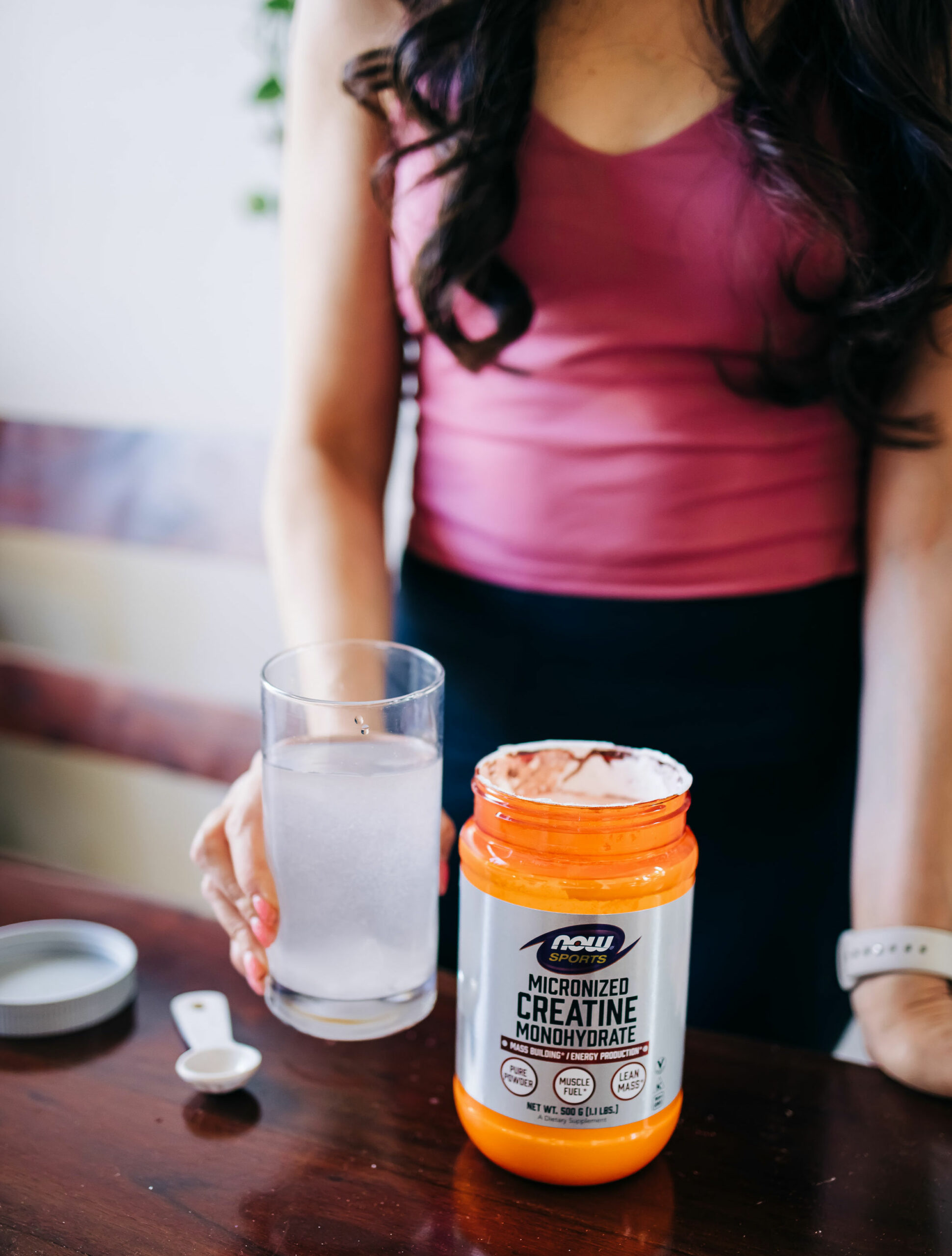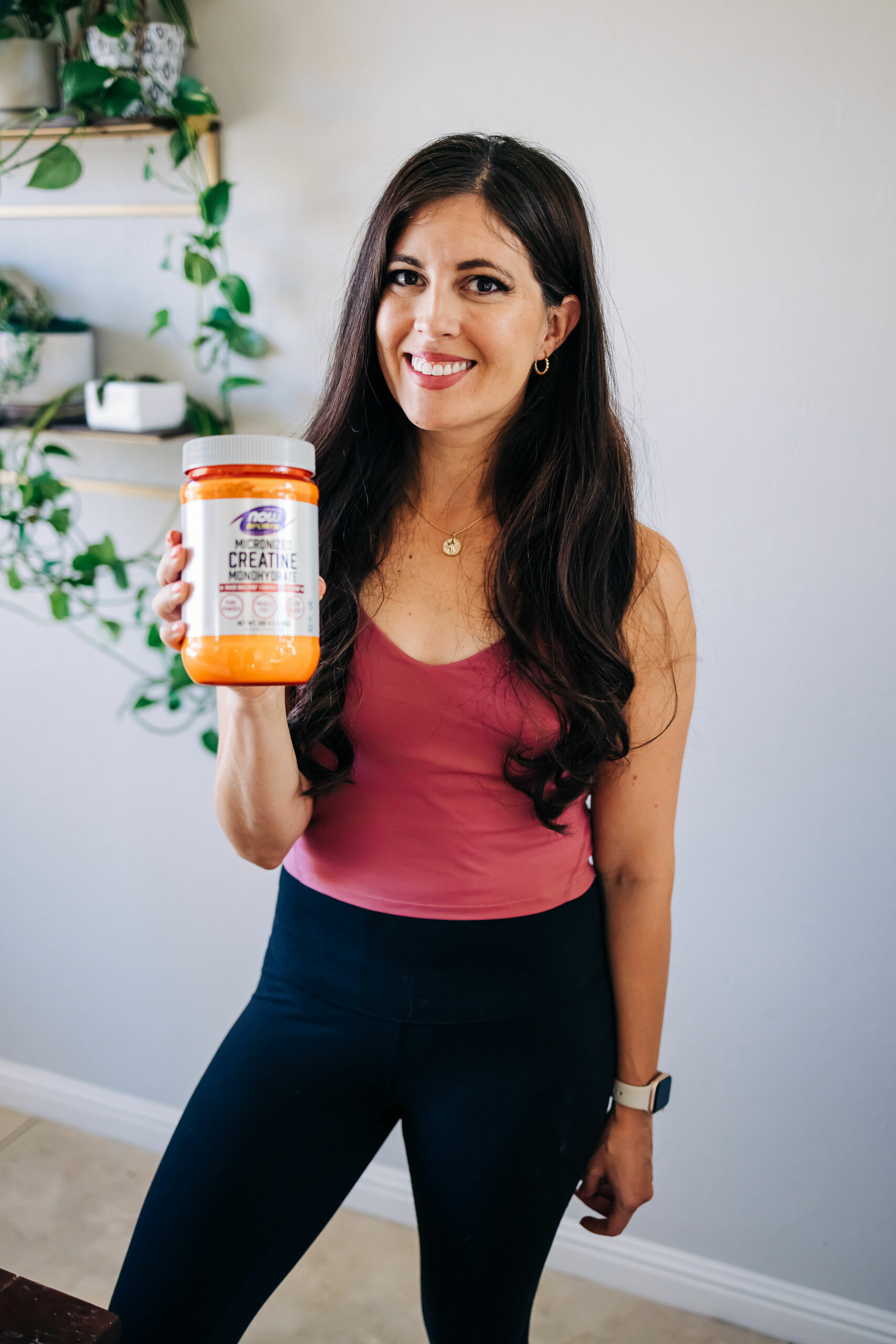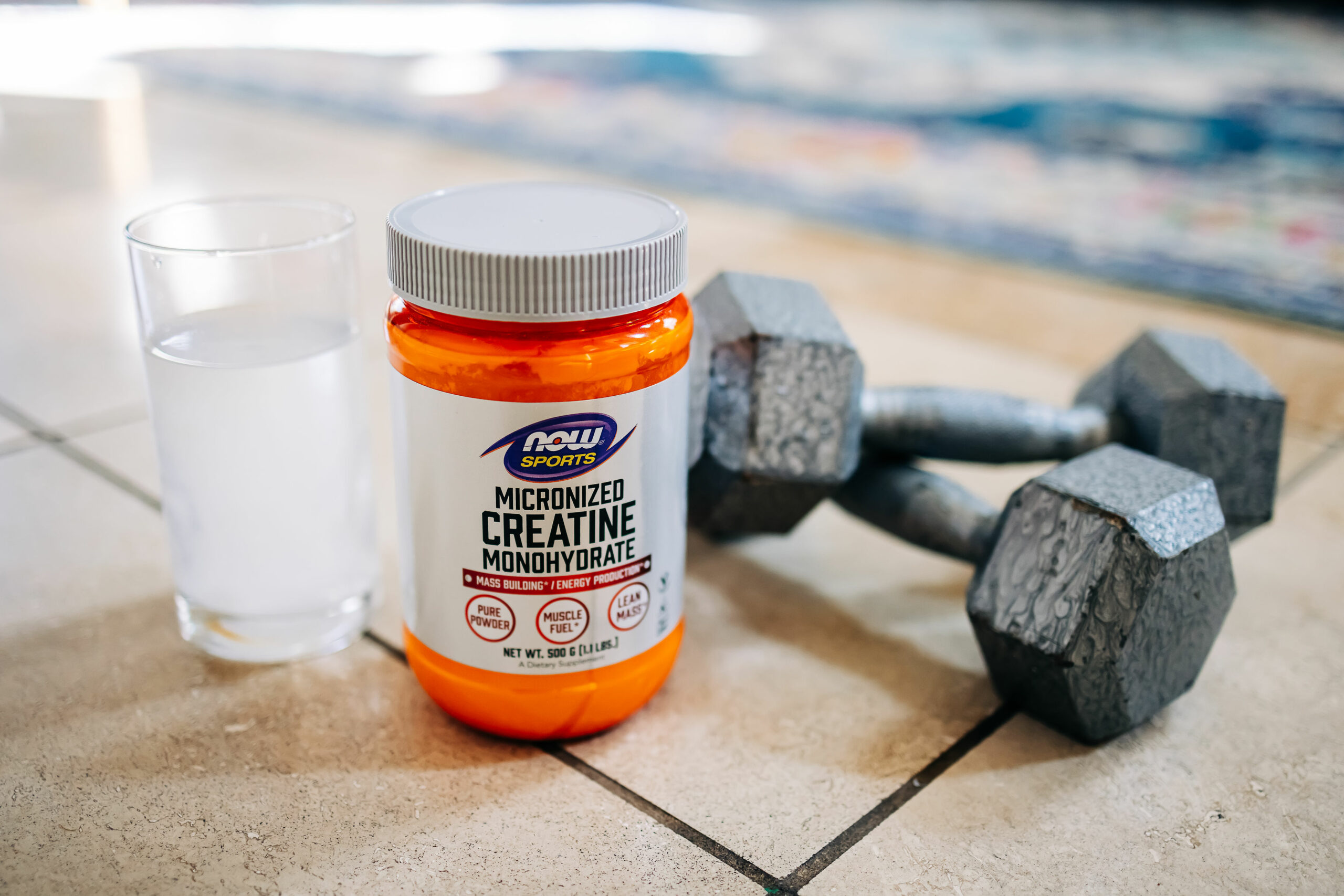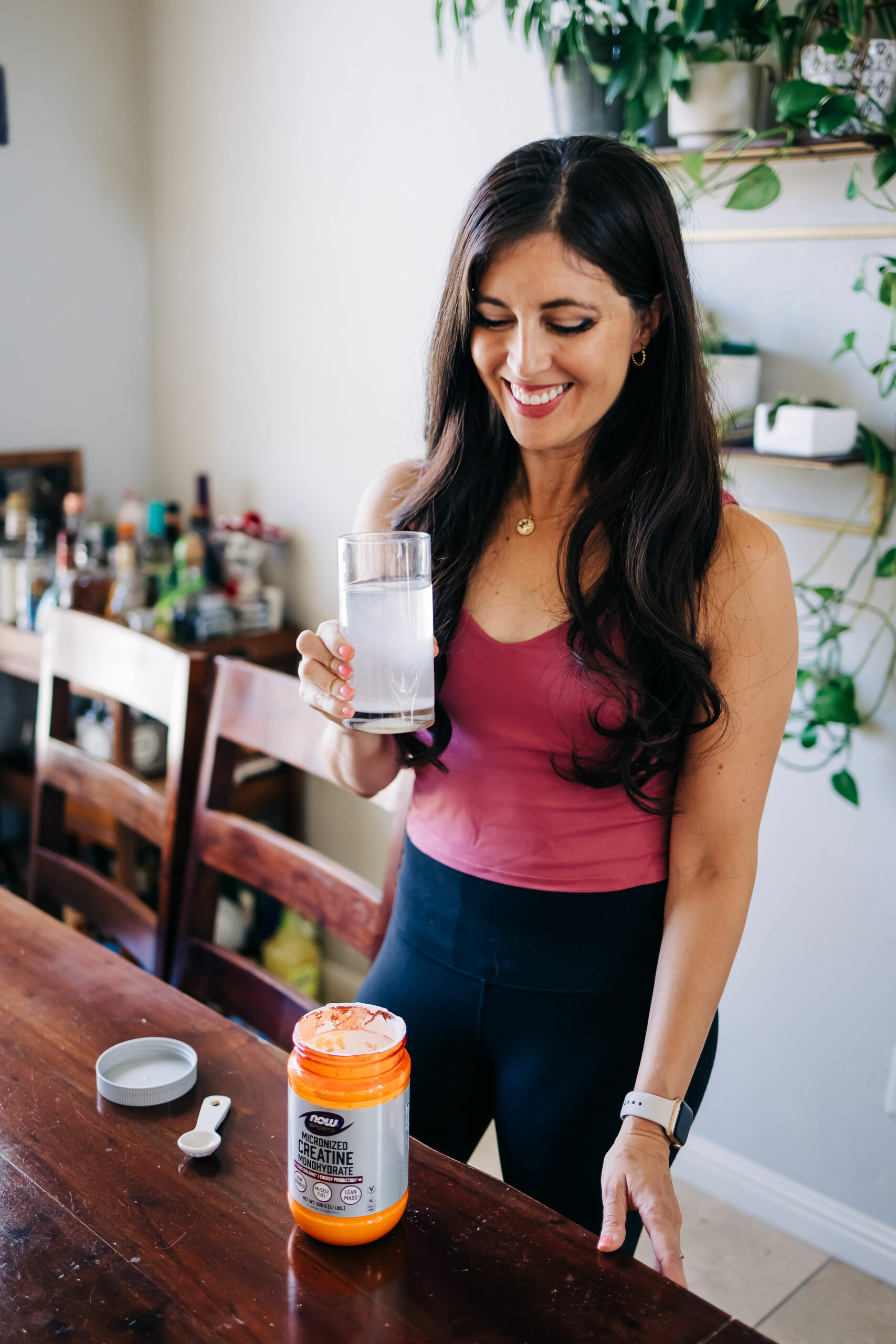This post is sponsored by my friends at NOW Foods and they have so many amazing products, including my fave creatine, on their site. Use FITNESSISTA for 20% off. Also this is a friendly reminder that this post is not medical information and not intended to prevent, treat, cure, or diagnose any illness. Always talk with your doctor before adding new supplements into your rotation.
Hi friends! How’s the day treating you so far? I hope you’re having a wonderful morning. For today’s post, I’m chatting about a huge reader’s request topic and one of my favorite supplements: creatine!
Creatine is often taken by athletes and bodybuilders to improve their performance, but it is also consumed by older adults and vegetarians for health purposes. Not everyone knows the right way to take creatine, how it works, or what needs to be considered before adding it into a supplement routine.
In today’s post, I’m sharing a guide that can provide some education and help with informed choices when it comes to taking creatine, depending on the purpose that it’s intended to be used. Friendly reminder that your doctor will help you decide if adding creatine is a good choice.
An Overview on Taking Creatine
Creatine is a supplement that can be taken as powder or liquid, before or after a workout. I prefer to take it as a post-workout, but the thing with creatine is that you need to take it consistently to see and feel a difference.
What Is Creatine
Creatine is an amino acid that is stored predominantly in muscle cells, with a small percentage in our brain, kidneys, and liver. You can get creatine in your diet from animal-based products, such as seafood and meat. This is why vegetarians and vegans will likely have lower creatine stores than omnivores and can often benefit from supplementation. Since creatine can be used for energy production for heavy lifting workouts and high-intensity training, it’s often used for performance enhancement.* Your body naturally produces 1-2g of creatine per day in the liver and pancreas.
Creatine is widely studied, easy to find, and inexpensive. My favorite creatine can be found here!
Creatine Types
Creatine monohydrate is the most widely-studied and is inexpensive. The other common types of creatine (including creatine ethyl ester, phosphate, liquid, and creatine magnesium chelate) do not have as much research behind them.
What Does Creatine Do For Women
There are a lot of benefits of taking creatine, but here are the top two that I think are important for women:
Building lean muscle*
Creatine can be especially beneficial for women as we age, as estrogen levels drop and muscle mass becomes more difficult to build and maintain. I’m a big believer that ALL women should strength train, and it becomes even more critical over time. Having muscle on your frame encourages a strong metabolism and also protects your bones. Being able to move functionally in all planes of motion can also help to maintain balance and strength over time for everyday activities and preventing falls. I think creatine can be an incredible addition to a solid strength training routine.
Supporting cognitive function and mood*
I’m all for anything that helps me feel a little less foggy mentally and will also help balance moods throughout the day. Our brain also utilizes ATP, and the increase in stored creatine can help support a positive mood.
Creatine Pros And Cons
Pros Of Creatine
- It’s one of the longest-studied supplements for safety. Creatine has been studied for over 200 years and has a long track record (see what I did there) for being safe and effective.
- Fitness performance! In a nutshell, creatine helps your cells produce ATP, which is the energy used for quick bursts of effort. We usually run out of our creatine stores, which can cause us to fail or become fatigued early in a sprint or strength set. Creatine gives that little extra boost!*
- It can increase muscle growth in the short term, and long term.*
- Potential positive impact on mood and mental health.
- Mental performance and memory. In this study, Creatine supplementation had a significant positive effect on both working memory (backward digit span) and intelligence (Raven’s Advanced Progressive Matrices), both tasks that require speed of processing.*
- It’s tasteless. It really tastes like nothing at all. If it didn’t make the water look slightly cloudy, you wouldn’t know it’s there. You can also dissolve it into warm beverages, like tea, or add it to a smoothie.
Cons Of Creatine
- It can make you gain scale weight. Creatine can encourage the cells to retain water (giving you that extra pop of muscle look), which can cause scale weight to increase. I’m a fan of ignoring the scale; especially if you feel great and are performing and recovering well
- Can affect sleep.* The jury is still out on whether this is a negetive effect or a positive effect. When researchers added creatine monohydrate to rats’ food, the duration and structure of their sleep changed. Despite requiring less sleep, and less deep sleep, creatine can still provide benefits that are contradictory to what you’d see with reduced sleep, especially when it comes to mental capacity and physical performance. If you find that it affects your sleep, I would try taking it in the morning
- More beneficial for quick bursts of effort (like sprints and weightlifting), not long duration steady state*
- Can have some side effects, like muscle cramps, stomach discomfort, bloating. I recommend starting slowly and seeing how your body responds before trying a full dose at once.
When Is The Best Time To Take Creatine
I like taking creatine after my workouts but any time of day works. For creatine dosage, I would consult with your doctor, but general recommendations are 3-5g. I consume 3g and have noticed a difference; it’s all about finding the minimum effective dosage.
If you have have significant muscle-building and performance goals, you can also do a creatine loading phase at the beginning of the cycle, which involves higher amounts of creatine spread into blocks throughout the day for one week to 10 days. (I only recommend this method in unique situations while working with your coach and doctor or practitioner.)
I also cycle my creatine usage. I’ll take it for a couple of months and then take a break for a few weeks before adding it back to my routine.
Creatine Before And After
I noticed physical changes after I started taking creatine, but noticed a more significant difference in cognition and mental function.* I felt more clear and focused.* I’m not going to post before and after pics here, but after adding creatine into my routine, I felt like the lights when on while I was strength training. I was able to lift heavier and recover well, and I also noticed some improvements in my muscle tone.*
It’s also worth mentioning here that creatine by itself with NOT make you bulky. Only a strategic strength training plan designed to create mass, a calorie surplus, and excess supplementation will do that, so don’t worry about turning into the Hulk with regular creatine supplementation.
So, tell me, friends: have you taken creatine? Are you going to give it a try?
Check out the NOW Foods site here and use FITNESSISTA for 20%! They also make amazing protein powder, my favorite essential oils, natural beauty products, and pantry essentials. I’ve visited their headquarters and was blown away by the care they put into creating quality products.
xo
Gina
*These statements have not been evaluated by the Food and Drug Administration. This product is not intended to diagnose, treat, cure or prevent any disease.










